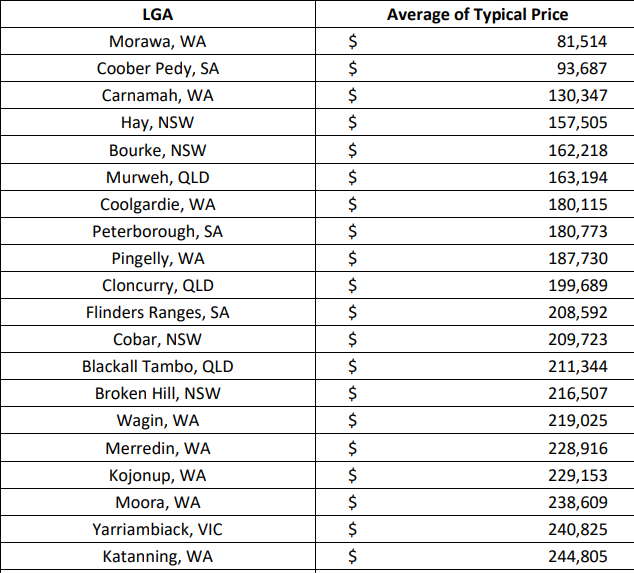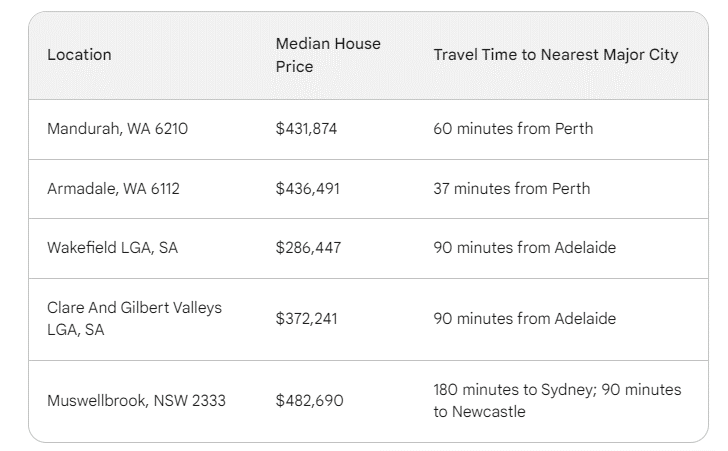

A recent analysis by a buyers’ agent identified numerous local government areas (LGAs) across different states, where the average house prices fell below $500,000 in 2023.
This opens up possibilities for both investment and lifestyle changes for homebuyers willing to consider interstate or regional options.
Using data from HtAG Analytics, Ritesh Tandon (pictured above), founder of Melbourne-based buyers agency Nest or Invest, found there were 134 LGAs where the sold properties averaged less than $500,000 last year.
“Homebuyers should not give up hope. Sometimes it’s about removing their blinkers, changing their mindset, and thinking differently,” Tandon said.

Australia boasts around 11 million dwellings (as of 2023), according to Tandon. However, a closer look at property sales reveals interesting trends.
In the past year, data for 613,344 house sales across 6,087 suburbs was available for analysis. This represents about 27% of Australia’s 15,334 suburbs, according to HtAG Analytics.
Data limitations exist due to insufficient sales data in certain areas. Tandon said these data gaps can exist due to a variety of reasons, from government policies and data privacy and regulations to data collection and reporting standards and resource constraints.
To ensure accurate calculations, Tandon requires at least 2-3 sales per quarter in a suburb. Therefore, only 415 out of 537 LGAs could be analysed.
The good news? Around 25% (134) of these analysed LGAs, encompassing nearly 600 suburbs, offer a wealth of affordable housing options.
In these areas, almost 36,000 houses, out of 1.2 million total homes, sold for under $500,000 in the past year. This presents exciting opportunities for both buying and investing in a residential dwelling.
Coming in as the cheapest LGA, according to the analysis, is the quiet Pilbara town of Morowa, situated around 368km north of Perth, Western Australia (WA).
Known for its wildflowers and farming links, an average home in Morowa set buyers back $81,514 in 2023.
This was followed by the South Australian opal mining town of Coober Pedy ($93,687). Famous for its underground dwellings, called dugouts that help miners escape the desert sun, the town is 848km north of Adelaide.
These were the only councils to have an average property price of less than $100,000 last year.
While many on the list of suburbs and LGAs are in remote areas, some are closer to major cities and amenities.
Out of 134 LGAs, WA had the highest number of entries in the list (26), followed by New South Wales (24), South Australia (22), Queensland (20), and Victoria (8).
The Northern Territory’s and Tasmania’s low counts (two each) reflect the discrepancies in the data, especially in remote areas, and the fact that both have a low amount of LGAs, with only 17 and 29 respectively.

While homeowners can go out and buy a property by themselves, Tandon said many are flying blind and missing the full picture without getting the right services.
Traditionally, Tandon said homebuyers have been going to local real estate agents for property purchases who have limited data and access to properties in the local suburbs only where they operate.
“The choice of approaching a real estate agent is altogether wrong since they are primarily into selling and are always going to be offering biased advice, essentially working on behalf of the property seller who pays them a commission,” he said.
“Therefore, it is important that purchasers start going to independent, licensed buyers’ agents who exclusively offer buying advisory services. Preferably, someone who can offer nationwide property purchase advice.”
There are several reasons why homebuyers may want to consider looking interstate where they can buy a property for under $500k, particularly if they are currently focused on purchasing a property in a large capital city where prices can be higher.
Here are eight points to consider when advising homebuyers to broaden their search and consider interstate options:
“One of the most significant advantages of looking interstate is the potential for greater affordability,” said Tandon.
“In many cases, properties outside of major capital cities may offer more space and amenities for a lower price, allowing homebuyers to get more value for their money.”
Different regions have diverse property markets with varying trends, demand, and supply dynamics.
“Exploring interstate options provides homebuyers with the opportunity to tap into markets that may be more favourable in terms of pricing and potential for growth,” Tandon said.
Moving to a different state may offer a lifestyle change.
“Different regions have unique cultural, recreational, and community aspects. Homebuyers should consider not only the property itself but also the lifestyle and amenities available in the new location,” Tandon said.
Some regions may offer better investment potential than others.
“Homebuyers can look for areas with potential for future growth, infrastructure development, or economic expansion, which may positively impact property values over time,” Tandon explained.
Large capital cities often experience high demand and fierce competition for properties, leading to bidding wars and inflated prices.
In contrast, Tandon said less competitive markets in other states may provide homebuyers with more negotiating power and a less stressful purchasing process.
The rise of remote work has made it more feasible for individuals to consider living in different locations. If a homebuyer’s work allows for remote arrangements, they may have the flexibility to explore options in other states without being tied to a specific city.
Smaller cities and regional areas often boast a better quality of life with lower levels of congestion, pollution, and stress, according to Tandon.
“Homebuyers might find a more relaxed and enjoyable living environment outside of bustling capital cities,” he said.
Investing in property across different regions can be a form of diversification.
“Economic conditions, job markets, and property cycles may vary between states, and spreading investments across different areas can mitigate risks associated with a single market,” Tandon said.
To help homebuyers change their mindset and consider interstate options, Tandon said buyers’ agents can provide information on the advantages, challenges, and opportunities in different regions.
“Conducting thorough research, understanding local property markets, and seeking advice from independent buyers advocates are crucial steps in making informed decisions about buying property interstate or in regional areas,” he said.
